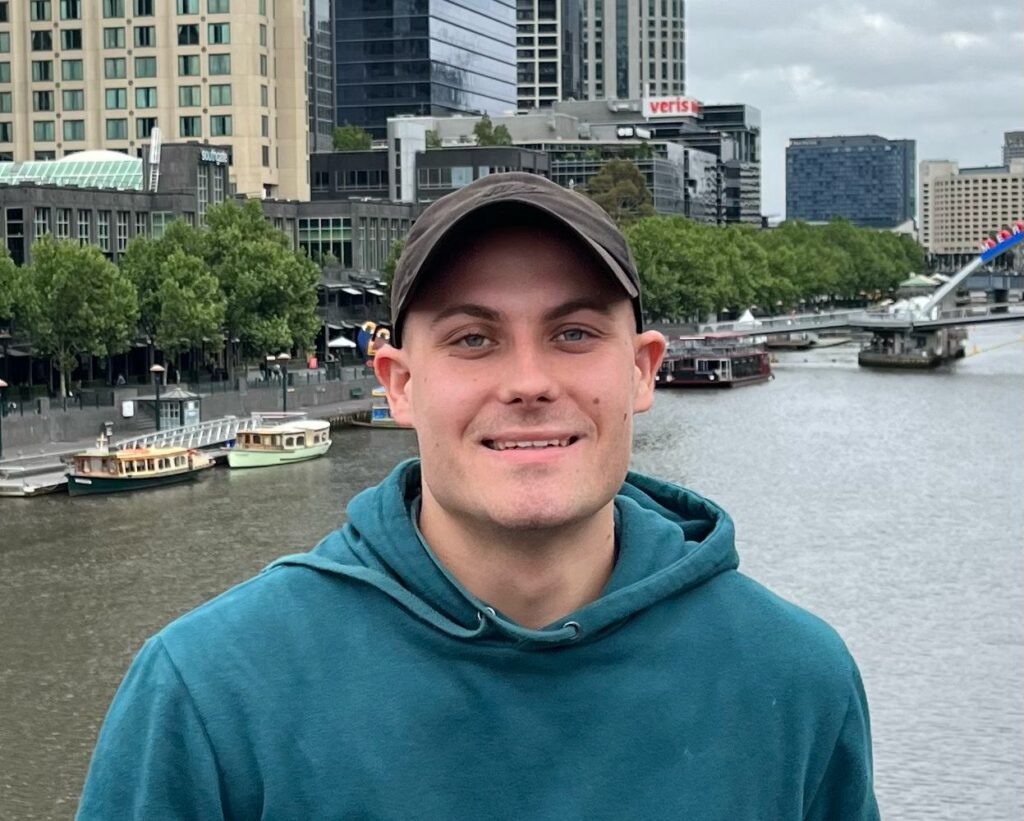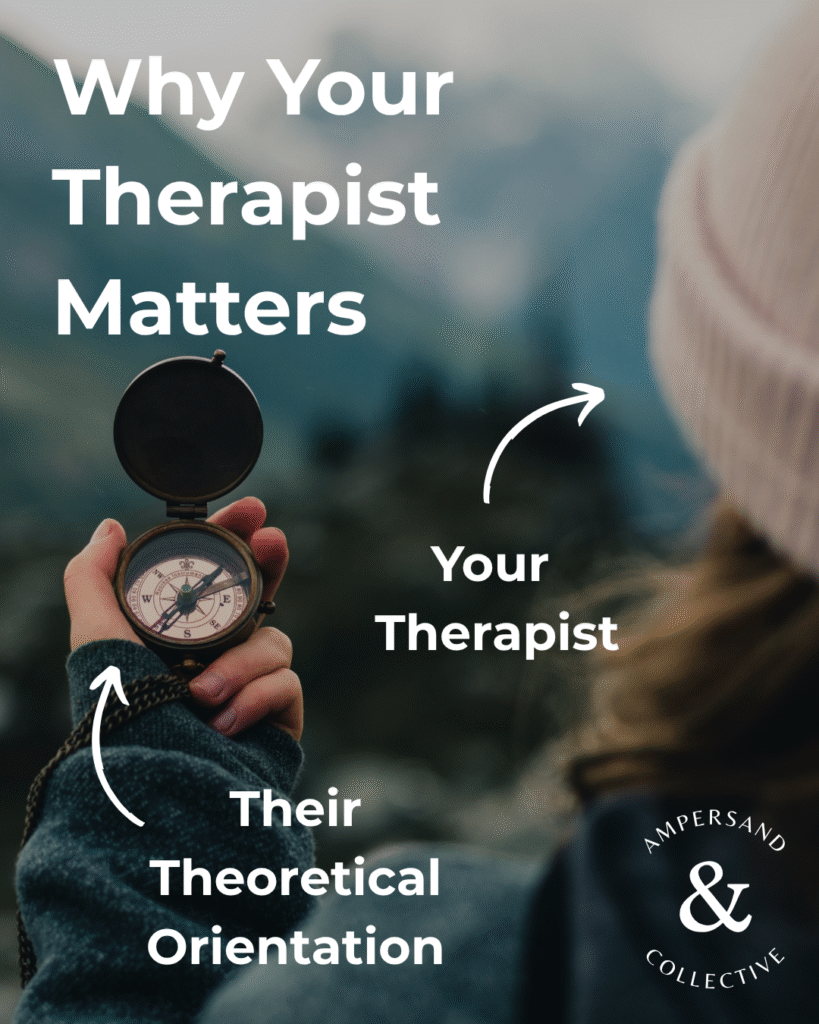Ann and I are thrilled to announce our newest member of the Ampersand Counseling Collective: Jake Johnson!
We met Jake through our therapist training at the Seattle School and are excited to continue working together ‘out in the real world.’
In light of our “Why Your Therapist Matters” series, we’ve asked Jake to introduce himself by sharing about his theoretic orientation, how he views health and how that shapes the work he does with his patients.

Q: What is your approach to therapy?
My approach to therapy is relationally and psychodynamically oriented, with some influence from existential theories and modalities. By oriented I mean that these particular modalities and theories guide my practice, but on occasion I may draw from other modalities to best meet the needs of a patient.
I use the term relational to refer to my belief in the role of relationships in our lives and how these relationships affect us, not just interpersonally (how we relate to/with others) but also intrapsychically (how we relate to/with ourselves). Many of us have been marked negatively by current or past relational experiences, and often these experiences influence how we relate not just to others, but ourselves. Relational psychotherapy recognizes this and attempts to not just provide new information, but to provide a therapeutic relationship in which the joys and pain of how one relates can be explored, felt, and dreamed of.
Psychodynamic therapy is a term that contains multiple theories and “schools” within it; speaking broadly, however, psychodynamic therapy refers to the idea that there is always more going on beneath the surface, and also more going on on the surface. A great image often used in Psychology 101 courses is that of an iceberg: there is a lot on the surface that we can see, but there is always more just beneath. This does not mean we must continuously “dig” or “dive” but rather that we often need the help of another to see more of ourselves. Psychodynamic therapy helps us to get to know ourselves, our choices, our desires, and our emotions in ways that we may not be able to on our own. It provides a space to be curious about our life, whether it be something from years ago or something from a few hours ago (or even something happening during therapy). It can act as a type of mirror, reflecting back to us things we may miss when relying on our own insight. In practice, though, this often looks and feels like having a conversation.
Q: Who or what have been the influences that have shaped your thinking?
There have been many people that have and continue to shape my thinking. I’ve listed a few below.
- Rollo May was an American psychologist best known for his contributions to humanistic and existential psychology. A key book of his that has been influential in my thinking is Man’s Search for Himself.
- The work of Donald Winnicott, a British psychoanalyst, continues to influence my thinking. I am particularly drawn to his theories about play, creativity, and the therapeutic relationship.
- One of the best books I’ve read about therapy so far is Schopenhauer’s Porcupines: Intimacy and Its Dilemmas by Deborah Anna Luepnitz. This book has been very helpful in how I think about the complexities of relationships, loneliness, and belonging.
- I am also indebted to many professors, colleagues, and friends who have and continue to support the growth of my clinical mind.
Q: How would you describe human flourishing? What does health look like to you?
While ideas of human flourishing must be tailored to each individual, I do hold a few thoughts that I believe apply to all individuals, with different levels of variation. Taking social, cultural, and other factors into mind, I view human flourishing as the capacity to have both satisfying relationships with others and with ourselves, to be able to rest, to be able to play, and to have an openness and flexibility in how we relate emotionally, socially, and intellectually. Psychotherapy helps not just by growing one’s awareness of their experiences, but also by helping to grow the capacity for new experiences, ideas, and feelings.
📚 References and Influences
- Bratt, P. (2012). Consulting the Patient: The Art of Being Together: Perspectives on Technique and Therapeutic Field. Modern Psychoanalysis, 37(2).
- Buber, M. (1970). I and Thou (W. Kaufmann, Ed.; 3rd ed.). T. & T. Clark.
- Eaton, Jeffrey. A Fruitful Harvest.
- Hooks, Bell. The Will to Change: Men, Masculinity, and Love. Simon and Schuster, 2004.
- Luepnitz, D. A. (2002). Schopenhauer’s porcupines: Intimacy and its dilemmas: Five stories of psychotherapy. Basic Books.
- May, R. (1953). Man’s search for himself. [1st ed.] Norton.
- Nancy McWilliams. (2004). Psychoanalytic Psychotherapy : A Practitioner’s Guide. The Guilford Press.
- Roy E. Barsness. (2017). Core Competencies of Relational Psychoanalysis : A Guide to Practice, Study and Research (Vol. 00088). Routledge.
- Volf, M. (1996). Exclusion and embrace: A theological exploration of identity, otherness, and reconciliation. Abingdon Press.
- Watkins, M., & Shulman, H. Toward Psychologies of Liberation.
- Williams, Rowan. Being Human: Bodies, Minds, Persons. SPCK, 2018.Winnicott, Donald. W. Playing and Reality.
We are so glad to have Jake as a member of our growing Ampersand Counseling Collective! If you are interested in connecting with Jake or would like to book at consultation call for starting therapy, you reach Jake via email jake@ampersandcollective.net or book a free consultation HERE.
Read more in our Why Your Therapist Matters Series:
- Part I: The Therapeutic Alliance
This first post explores the importance of the relationship between the therapist and the patient for the success of therapy and why it is necessary to have a good relational “fit.” - Part II: Maggie’s Theoretical Orientation
This post explains that not all therapists are created equal and how your therapist’s training and theoretical orientation shape the experience of therapy. Maggie shares her own approach to psychotherapy, including her theoretical influences. - Part III: Ann’s Theoretical Orientation
Ann continues our series by sharing her own approach to healing, looking at the theoretical influences and resources that have shaped both her understanding and praxis of psychotherapy.


Leave a Reply